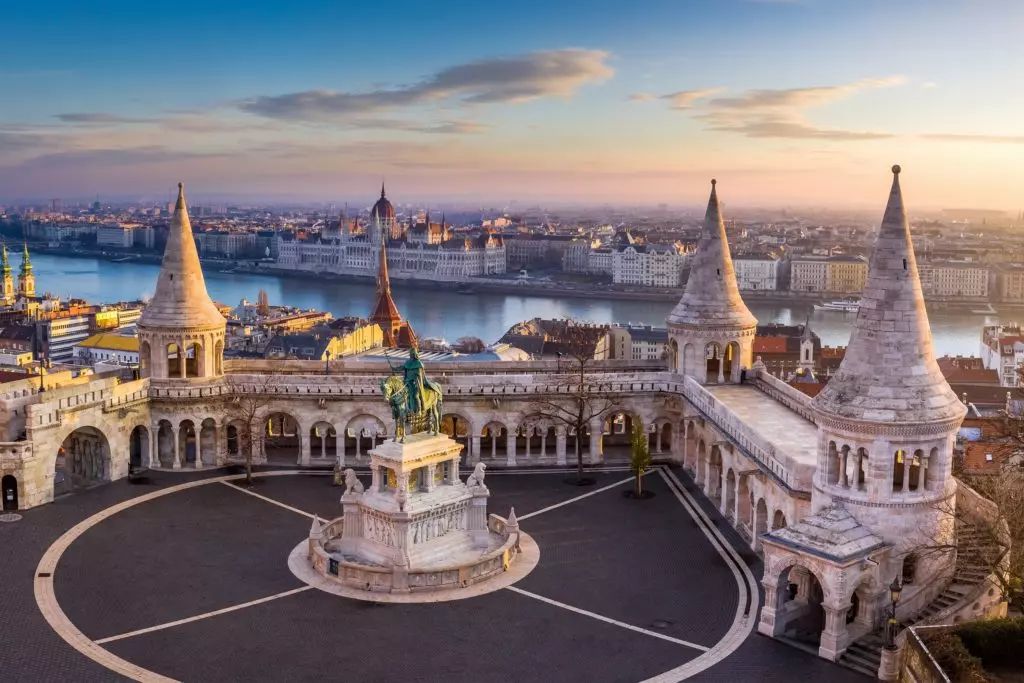
Summer heat is already behind us, and it's the perfect time to shift your vacation focus from seaside shores to tours of remarkable cities. This fall, we suggest embarking on a journey to one of the most picturesque cities in Eastern Europe—Budapest.
Hungary's capital is one of the most beautiful European cities, blending centuries-old history, architecture from various eras, and modern culture. Until 1873, Budapest consisted of three separate cities: Buda and Óbuda on the western bank of the Danube, and Pest on the eastern side. Later, they were united into the city we now know as Budapest.
What to see in Budapest? Impressive buildings, picturesque streets, and a unique atmosphere attract not only travelers from around the world but also often serve as filming locations. The city "played a role" in films like Mission Impossible, Munich, An Englishman Abroad and more.
Few know that Budapest is also home to one of the oldest and the second-largest metro system in Europe.
If you're planning a trip to Hungary's capital, you must visit the best spots in Budapest to fully experience the city's unique spirit. In this article, we’ve prepared a selection of the "Top 20 places in Budapest" to help you create your own sightseeing itinerary.
1. Hungarian Parliament (Országház)
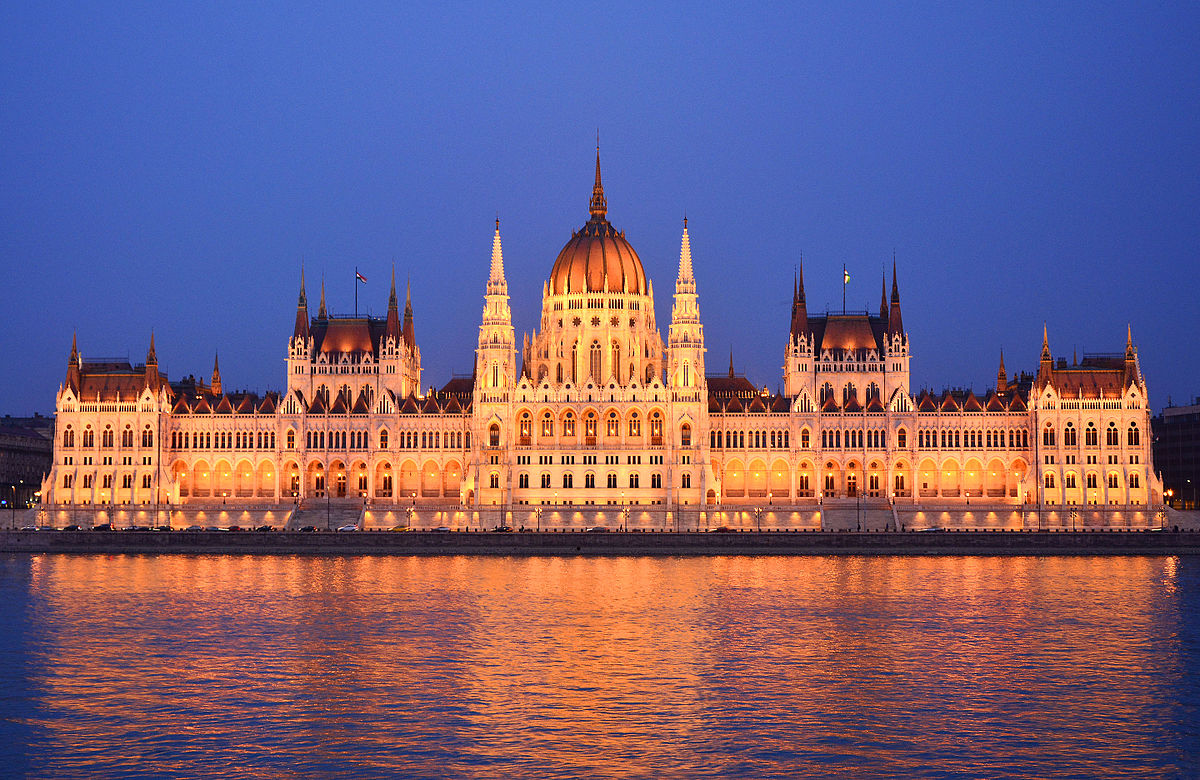
Topping the list of Budapest's best places is one of the most famous and largest parliamentary buildings in the world. This enormous 268-meter-long Neo-Gothic structure is located on the banks of the Danube River. Construction began in 1885 and lasted nearly two decades. Inside, there are 691 rooms, each adorned with marble columns and embellished with gold details. The dome of the Budapest Parliament reaches a height of 96 meters, making it the third-largest in the world.
2. Fisherman's Bastion (Halászbástya)
One of Budapest's most iconic and beautiful architectural landmarks, located on the Buda Hill. This Neo-Gothic structure, built at the beginning of the 20th century, features seven towers symbolizing the seven Hungarian tribes that founded Hungary in 896. The Bastion resembles a medieval fortress, although its construction had no defensive purpose. It was opened in 1902 and was named after the fishermen's guild, which, according to legend, was responsible for defending this part of the city in medieval times.
The Bastion also serves as an observation deck, offering breathtaking views of the city, the Danube River, and the Parliament building.
3. Tram №2
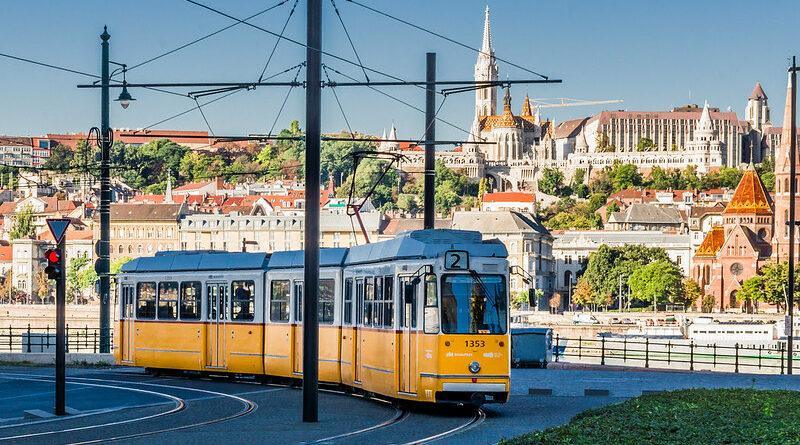
This city tram, which runs along the Danube, is considered one of the most scenic tram routes in the world and offers an affordable alternative to traditional tours. The route runs along the Pest side of the Danube, providing picturesque views of Buda's landmarks: the Parliament, Chain Bridge, and Fisherman's Bastion.
4. St. Stephen's Basilica (Szent István-bazilika)
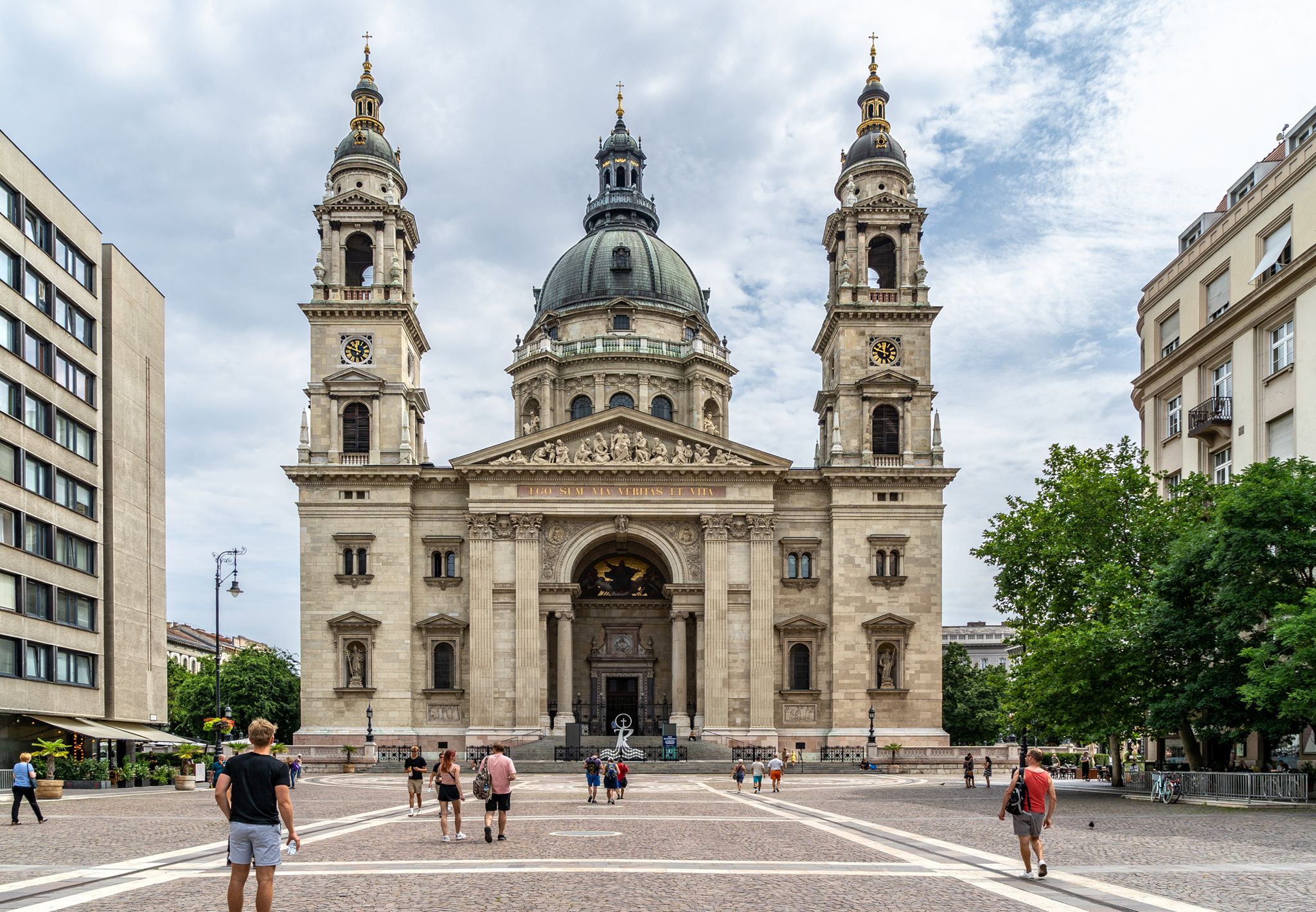
The largest church in Budapest, named after Hungary's first king, St. Stephen. It can accommodate up to 8,000 people. The basilica, built in a Neoclassical style with Renaissance elements, reaches a height of 96 meters, making it one of the tallest structures in Budapest, symbolizing the founding of Hungary in 896. Inside, the church is adorned with luxurious marble and gold details, with a stunning fresco decorating its main dome. It houses a famous relic—the right hand of King Stephen, which is a pilgrimage object. The basilica is also known for its observation terrace, offering a panoramic view of the city.
5. Chain Bridge (Széchenyi Lánchíd)
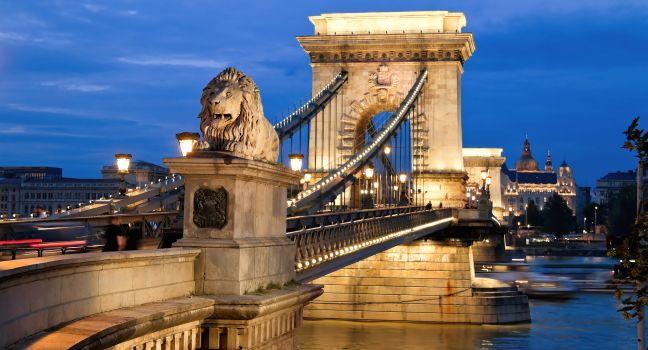
One of Budapest's most famous and significant landmarks, connecting the two banks of the Danube: the historic districts of Buda and Pest. Opened in 1849, it was the first permanent bridge across the Danube in Hungary and played a key role in the city's development, uniting its divided parts into a single metropolis. The Chain Bridge became an important symbol of Hungarian independence and national pride. During World War II, it was destroyed and later rebuilt in 1949 as a symbol of unity and rebirth.
6. Buda Hill and Buda Castle
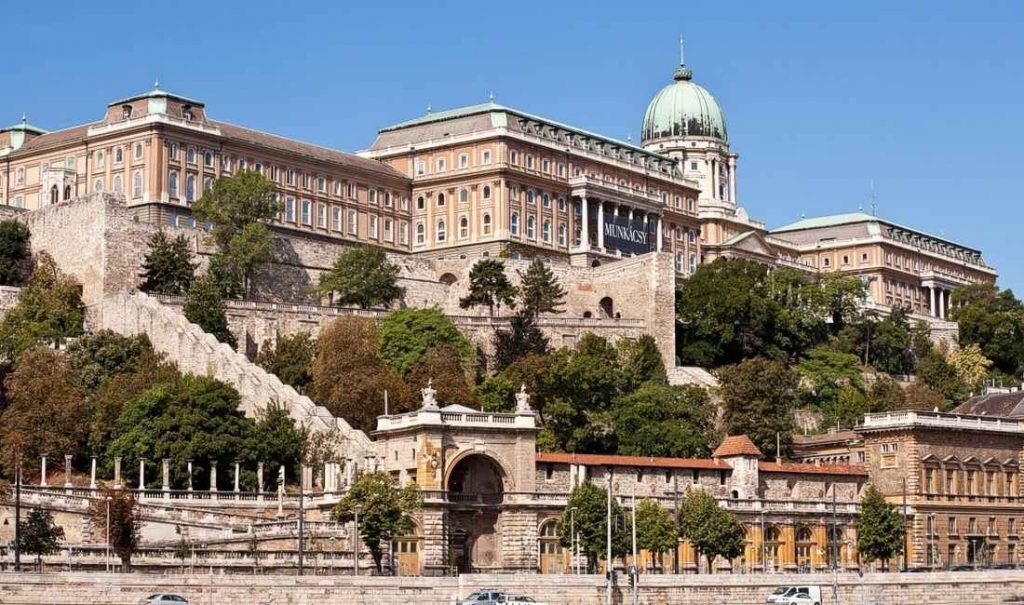
This historic part of the city is known for its narrow streets, ancient buildings, and scenic viewpoints of Budapest's best attractions. It is home to the Royal Palace, the Historical Museum, Matthias Church, and many other landmarks, including underground caverns. You can reach the top of Buda Hill via the historic Sikló funicular.
7. Széchenyi Thermal Baths (Széchenyi Gyógyfürdő)
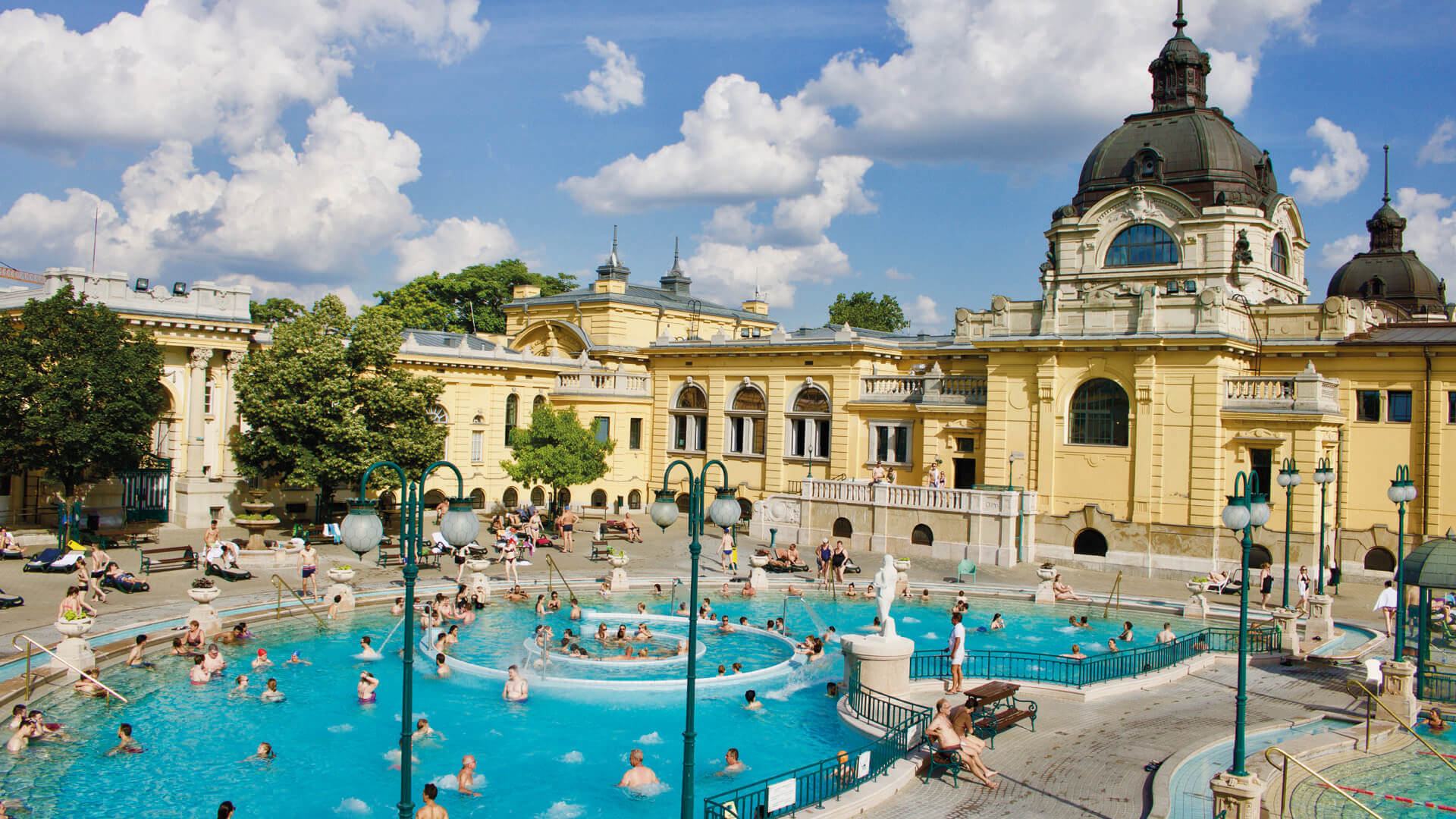
Europe’s largest bath complex, opened in 1913, with 18 pools, saunas, and steam rooms. The outdoor thermal pools, particularly popular, maintain temperatures of +27°C to +38°C, even in winter. The thermal waters are also known for their medicinal properties, making it a favorite spot for both tourists and locals.
8. Central Market Hall (Nagyvásárcsarnok)
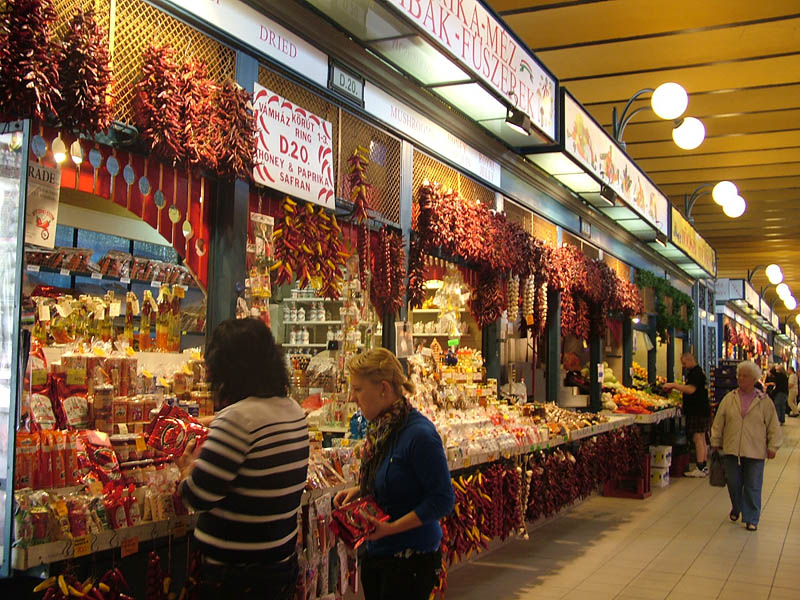
The largest and oldest indoor market in Budapest. Here, you can sample traditional Hungarian dishes, buy souvenirs, and shop for local products.
9. Margaret Island (Margitsziget)
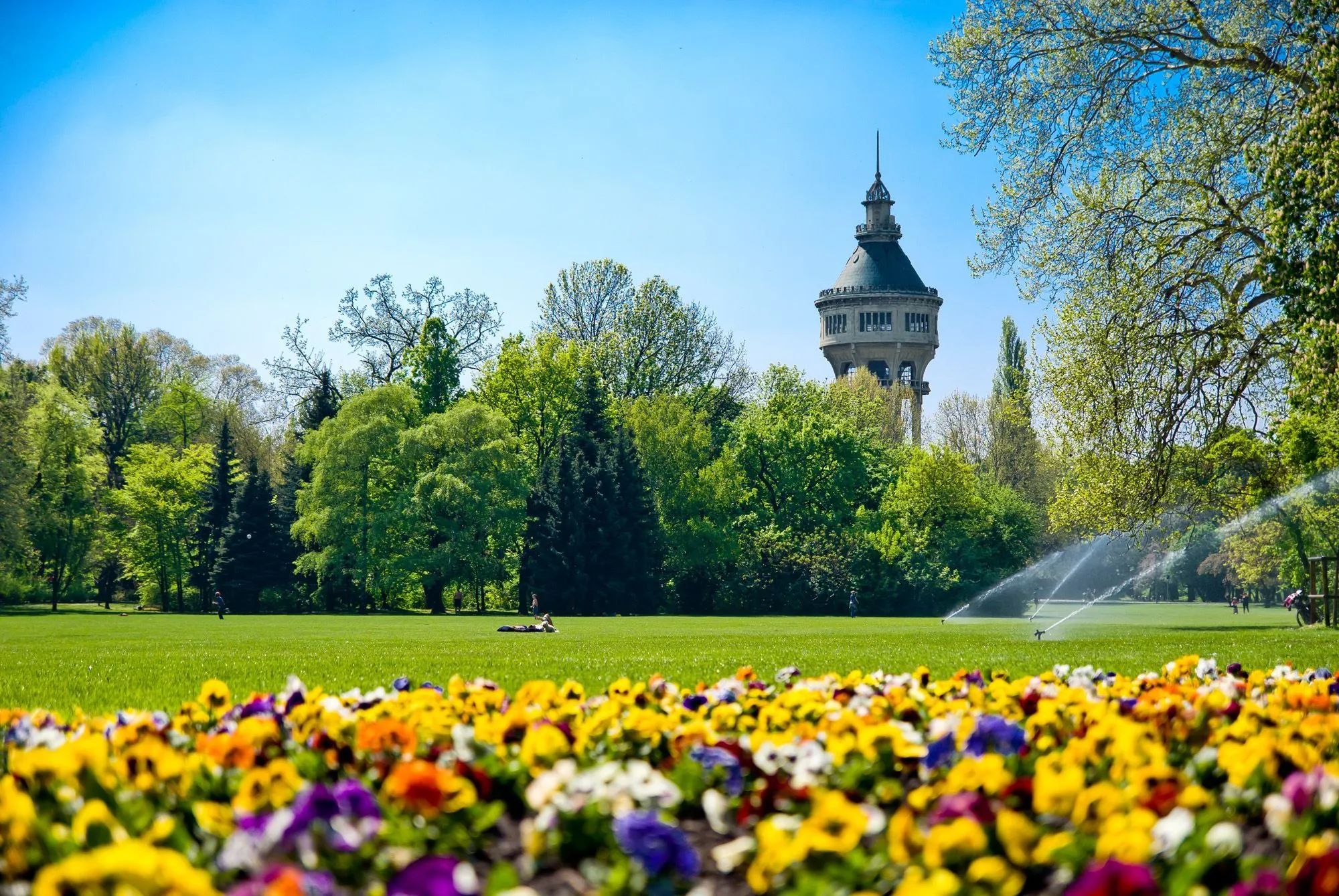
A large, well-maintained park located on an island in the middle of the Danube, it’s a favorite spot for locals to stroll during the summer. Accessible via bus No. 26, the island features thermal pools, a musical fountain, a summer waterpark, and a mini zoo. It’s an ideal spot for family outings.
10. Gellért Baths (Gellért Gyógyfürdő)
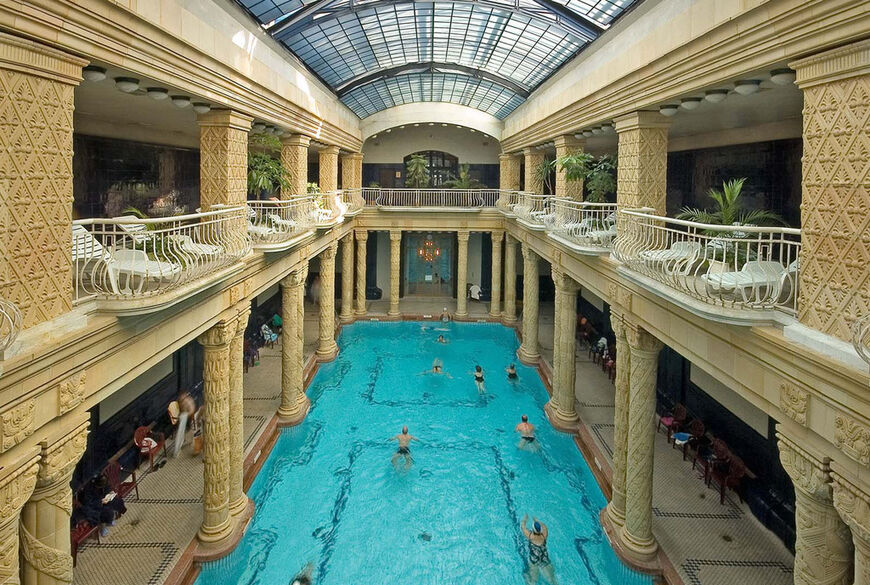
While Széchenyi Baths are the most popular in Budapest, Gellért Baths are renowned for being the most beautiful. Surrounded by colorful stained glass, mosaics, and marble statues, you’ll feel as though you’re swimming in a fairytale palace. In addition to its elegant interior, Gellért offers a wide range of spa services and wellness treatments.
11. Váci Street (Váci utca)
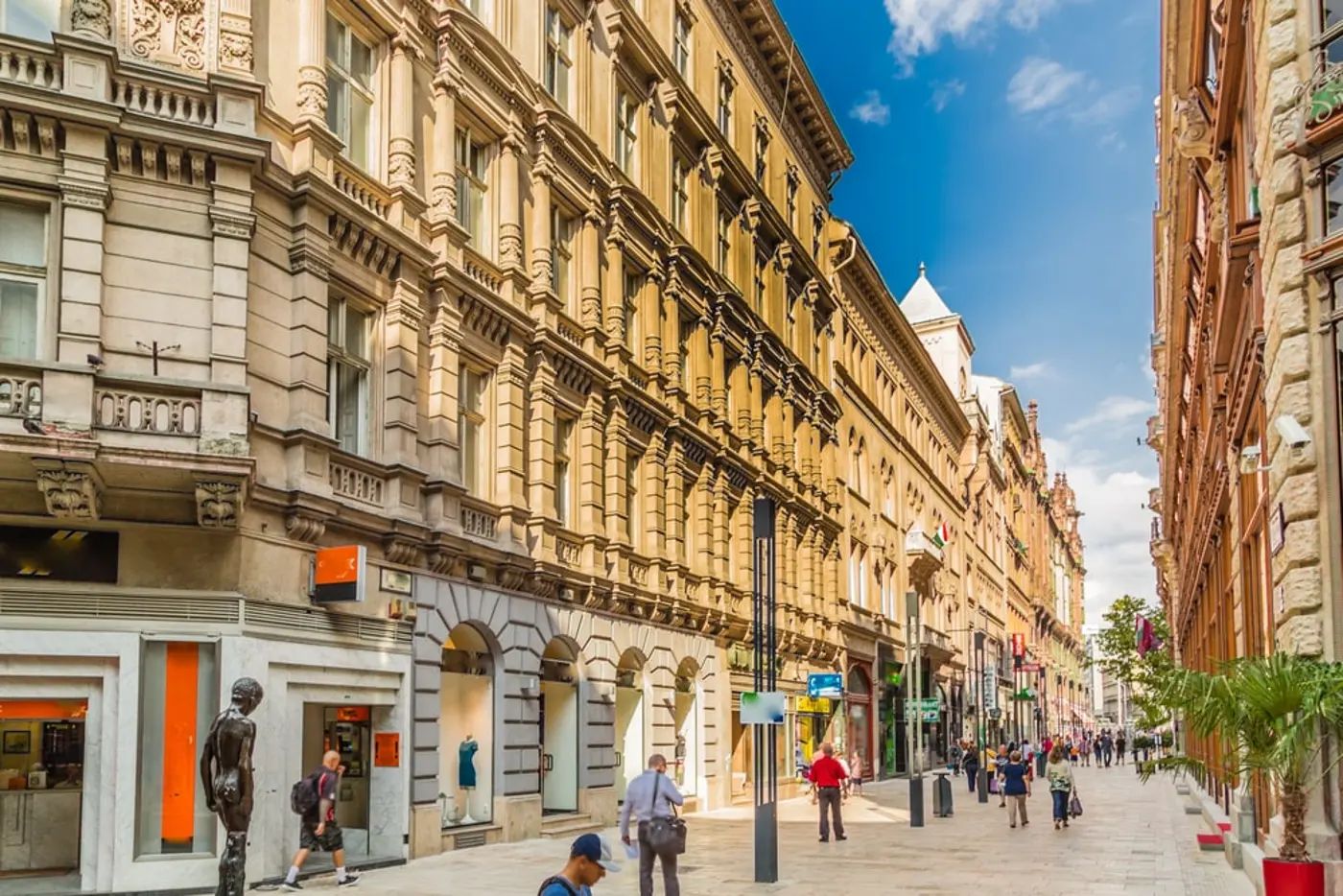
The main pedestrian street in the city, lined with numerous shops, cafés, and restaurants. Stretching from Vörösmarty Square to the Central Market, it is the heart of Budapest's shopping and entertainment scene and an ideal place for leisurely strolls.
12. "Shoes on the Danube Bank" Memorial
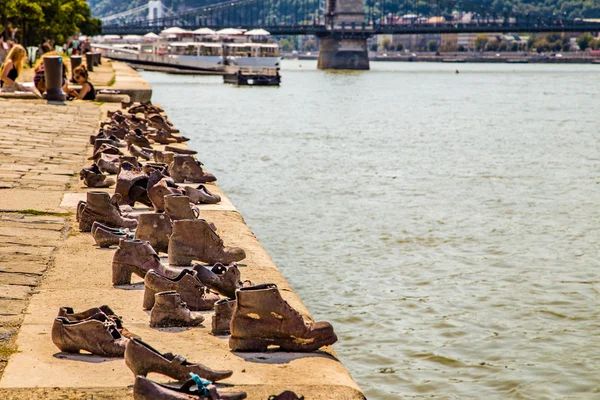
A deeply moving Holocaust memorial consisting of a row of metal shoes placed on the riverbank to honor the Jews who were executed at this site during World War II. It serves as a poignant reminder of the atrocities committed during that time.
13. Hungarian State Opera (Magyar Állami Operaház)
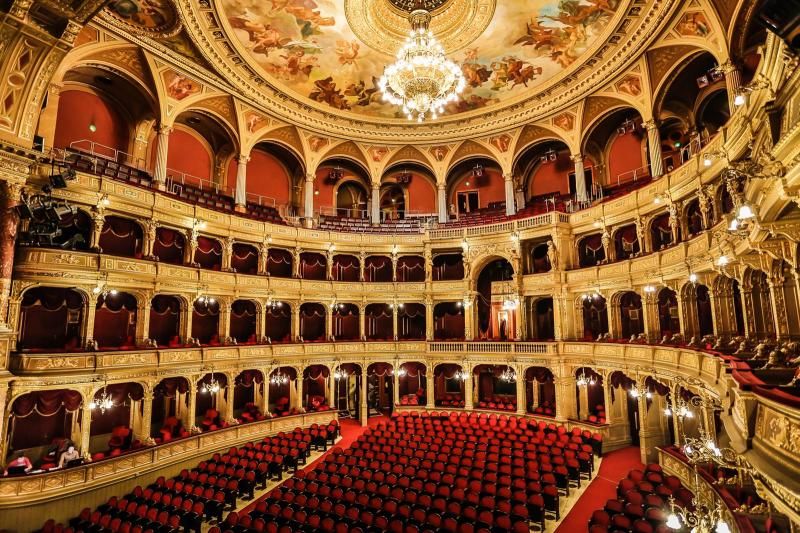
Opened in 1884, the Budapest Opera House is one of the most prestigious in Europe. Its lavish interior features marble columns, gilded details, frescoes, and a massive crystal chandelier, creating a royal theater atmosphere. The dome’s fresco, depicting Apollo and the Muses, is particularly striking. The opera seats 1,200 people, and its acoustics are considered among the best in the world.
14. City Park (Városliget)
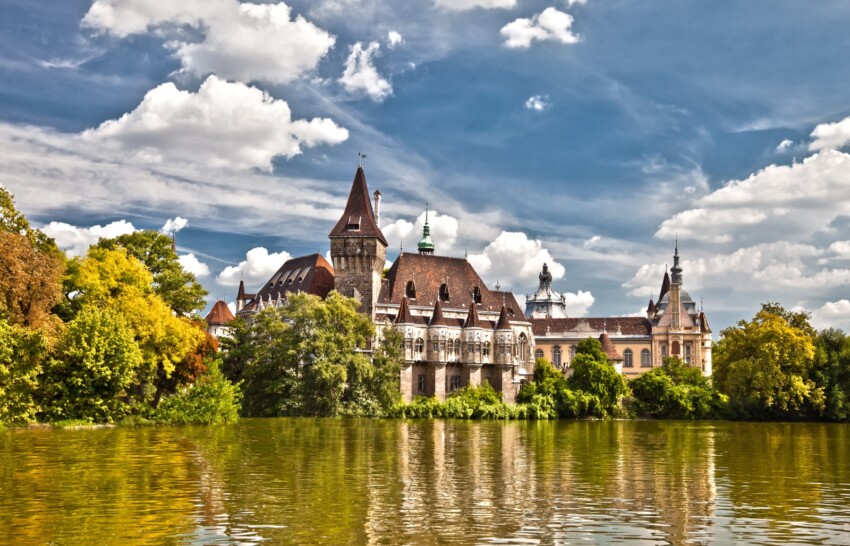
City Park is home to Vajdahunyad Castle, an artificial lake, a zoo, a circus, and the Museum of Fine Arts. Opened in 1896 to commemorate Hungary’s millennium, it has since become a popular spot for locals and tourists alike to relax and explore.
15. Jewish Quarter and Great Synagogue (Dohány utcai zsinagóga)
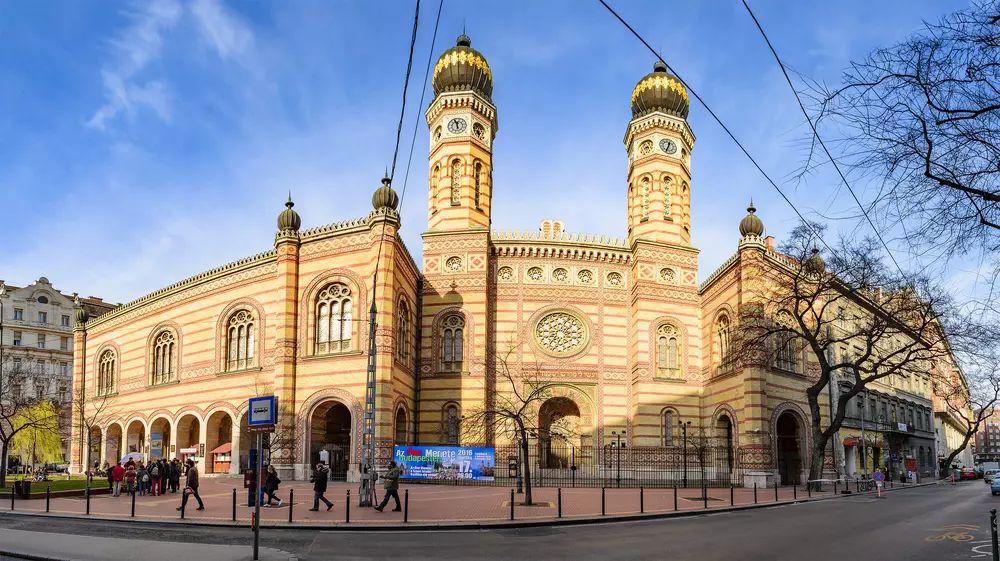
The largest synagogue in Europe and the second-largest in the world. Built in 1859, it can accommodate up to 3,000 people. The synagogue is a key religious and cultural hub for Budapest’s Jewish community.
16. House of Terror Museum (Terror Háza Múzeum)
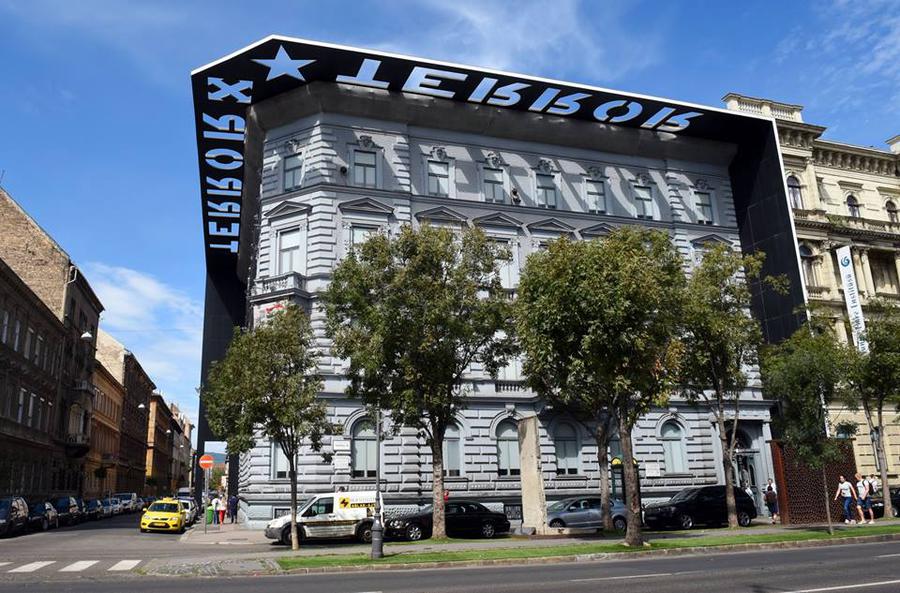
For those seeking unique places to visit, the House of Terror Museum is a must-see. Opened in 2002, it commemorates the victims of totalitarian regimes and is located in a building that once housed the headquarters of the fascist and communist secret police.
17. Gellért Hill (Gellért-hegy) and the Citadel
%20%D1%96%20%D0%A6%D0%B8%D1%82%D0%B0%D0%B4%D0%B5%D0%BB%D1%8C.jpg)
Gellért Hill is one of Budapest’s most famous natural and historical landmarks, rising 235 meters above the Danube. From the top, you can enjoy some of the city’s most stunning panoramic views. Popular among nature lovers, the hill offers trails and parks perfect for walks and picnics in the heart of the city.
At the summit stands the Citadel, a fortress built by Austrian forces in 1851 after the suppression of the Hungarian Revolution of 1848-1849. Additionally, the Liberty Statue, erected in 1947 to symbolize Hungary’s liberation from Nazi occupation, stands atop Gellért Hill.
18. Museum of Fine Arts (Szépművészeti Múzeum)
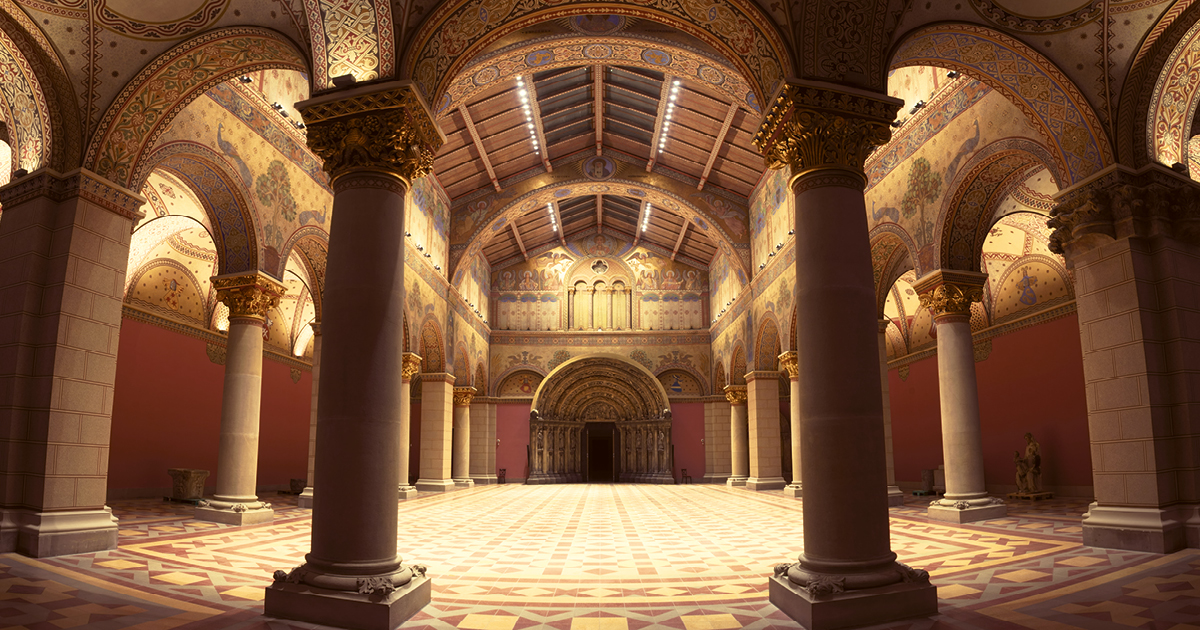
One of Hungary’s most renowned museums, housing masterpieces of European art, ranging from Ancient Egypt to the modern era. The collection includes works by notable artists such as Raphael, El Greco, and Rembrandt.
19. Aquaworld
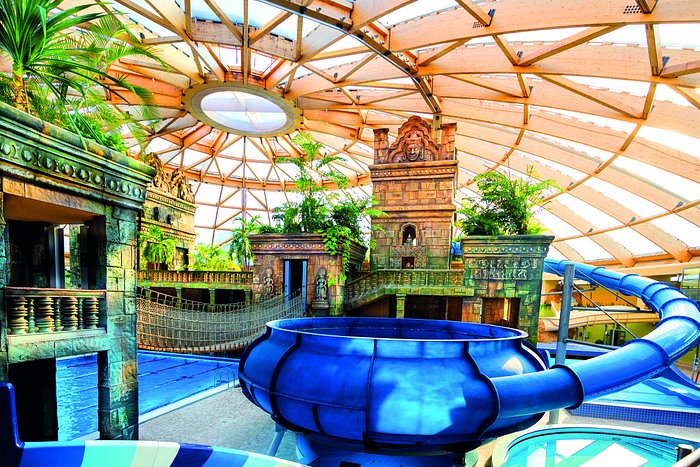
Aquaworld is the largest and most original waterpark in Eastern Europe. Besides numerous water slides, visitors can also enjoy surfing and diving. Aquaworld features over 15 water slides of varying lengths and difficulty, wave pools, children's pools, jacuzzis, saunas, and relaxation areas. The main building’s architecture is inspired by Angkor Wat. There’s also the Aquaworld Resort Hotel on site, allowing guests to stay for several days to fully experience the waterpark.
20. Marzipan Museum
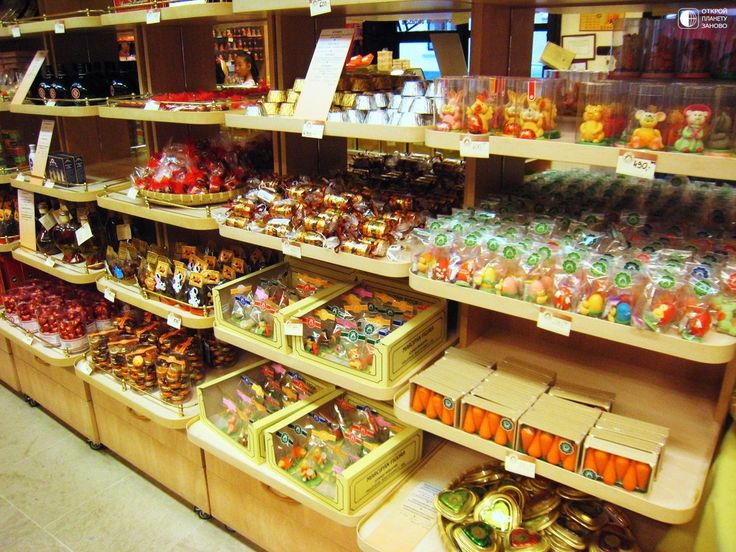
Located in the charming town of Szentendre, about 20 km from Budapest, the Marzipan Museum is a popular attraction for tourists. Dedicated to the art of marzipan, the museum showcases intricate sculptures made from marzipan, including figures of fairy-tale characters, historical figures, and famous buildings. Among the highlights are marzipan replicas of Hungarian kings, famous statues, and even a miniature model of the Hungarian Parliament. Visitors can observe artisans at work and purchase marzipan souvenirs in the museum shop.
Now that you know what to see in Budapest, you're ready to plan an unforgettable trip this fall. If you're crossing the land border between Ukraine and Hungary, you can also take advantage of pre-order options at the duty-free shops at the Chop, Luzhanka and Kosino border points. By placing an order on the MyDutyFree website or app, you can receive a 5% discount and pick up your goods at a dedicated counter without waiting in line.
Enjoy your travels and happy shopping!
